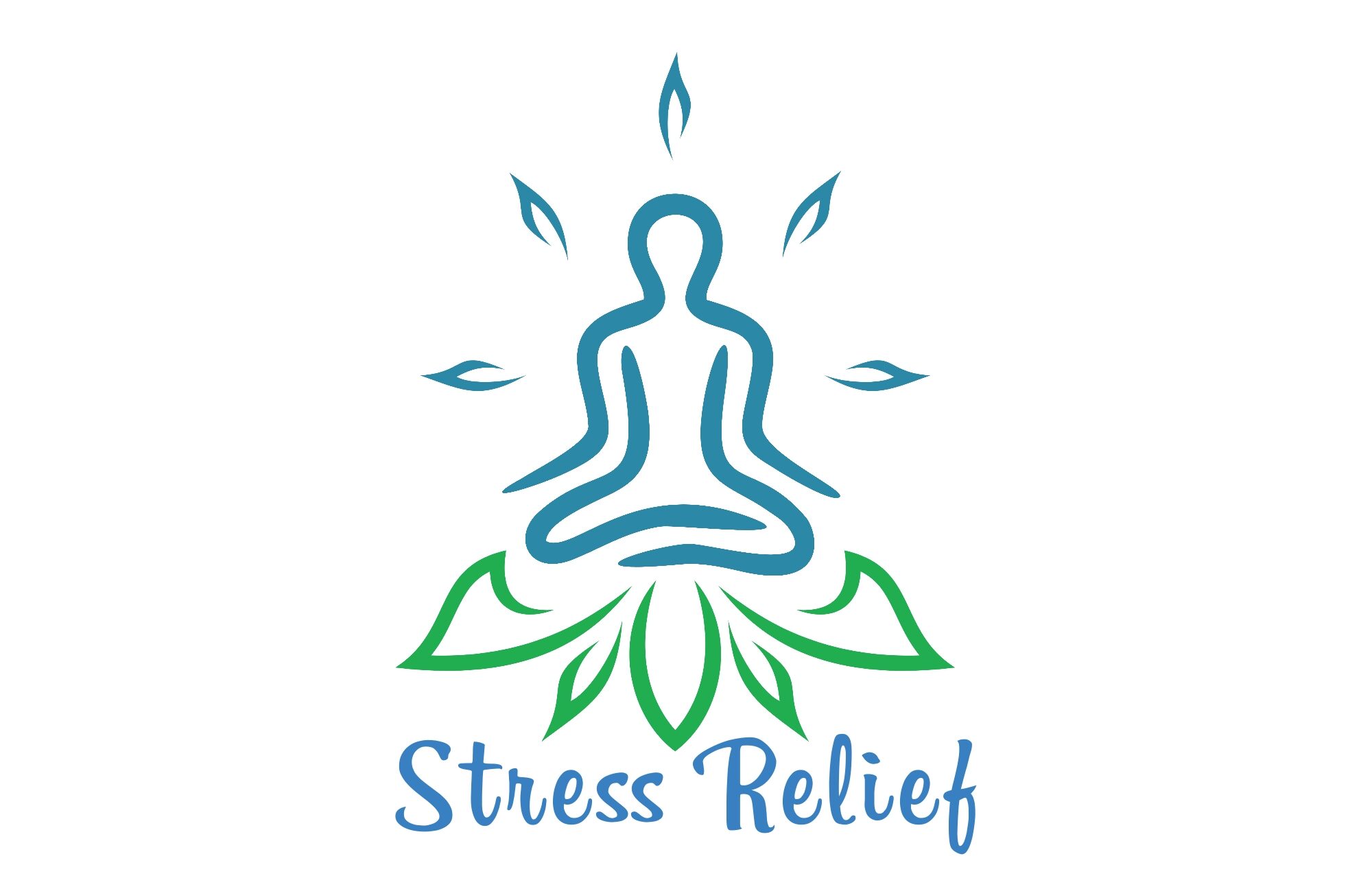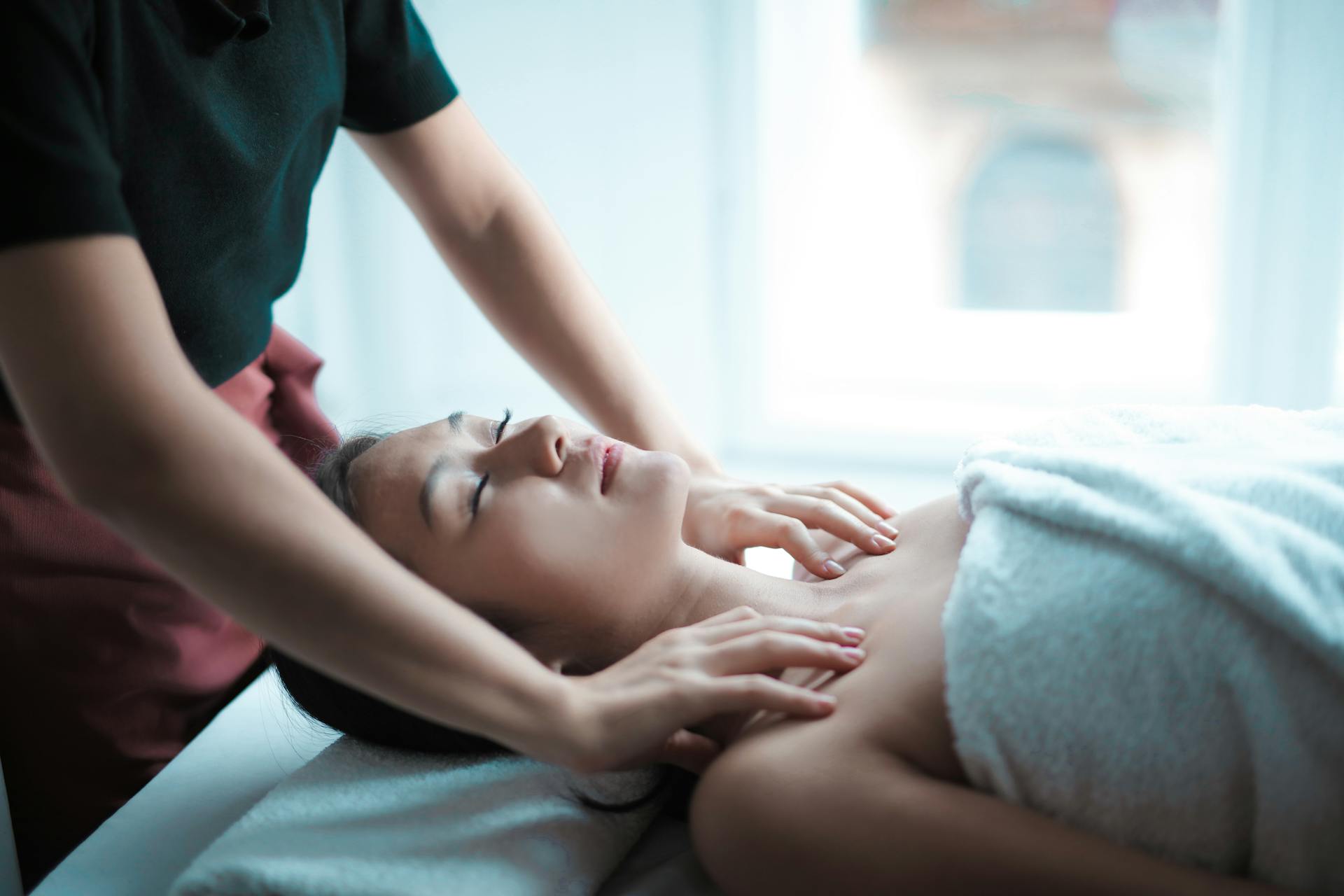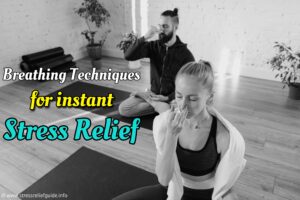I. Introduction to Self-Massage
A. Understanding Stress and its Impact on Health
Stress is a common and unavoidable part of life, affecting both our mental and physical well-being. It can lead to various health issues such as headaches, muscle tension, and sleep disturbances. While it may not be possible to eliminate all sources of stress, learning effective stress management techniques like self-massage can significantly reduce its impact on our lives. In this article we will know about some important point about self-massage techniques for stress release.
B. Benefits of Self-Massage Techniques for Stress Relief
Self-massage is a powerful tool that allows us to take control of our own well-being. It offers numerous benefits for stress relief, including relaxation, improved circulation, and the release of endorphins, also known as the “feel-good” hormones. By incorporating self-massage into our daily routines, we can enhance our overall quality of life and promote a sense of calm and tranquility.

C. How Self-Massage Works: The Science behind it
Self-massage works by stimulating pressure receptors under our skin, which send signals to our brain, releasing feel-good neurotransmitters like serotonin and dopamine. This neurochemical response helps reduce stress and induces a state of relaxation. Additionally, self-massage promotes the release of muscle tension, improves blood and lymphatic circulation, and enhances the flow of energy throughout our body.
II. Preparing Your Environment for a Relaxing Session
A. Creating a Calming Atmosphere
Before diving into a self-massage session, it’s crucial to prepare a soothing environment. Choose a quiet room with soft lighting, and make sure you won’t be interrupted. Clear any clutter and add elements like plants or calming artwork to create a tranquil space that encourages deep relaxation.
B. Gathering Essential Tools and Materials
To maximize the benefits of self-massage, gather the necessary tools and materials. These may include massage oils or lotions, a comfortable mat or massage table, and handheld massagers or massage balls. Having these items readily available will ensure a seamless and enjoyable self-massage experience.
C. Setting the Right Mood: Music and Aromatherapy
Music and aromatherapy can play a significant role in creating the right atmosphere for your self-massage session. Choose calming instrumental music or nature sounds to promote relaxation. In addition, consider using essential oils or scented candles to enhance the sensory experience and create a serene ambiance.
III. Head and Neck Massage Techniques
A. Relieving Tension in the Scalp

One effective technique to release stress from the scalp is through circular movements with your fingertips. Apply gentle pressure in small circular motions, starting from the front of the scalp and working your way back. Another technique involves gently pulling on small sections of hair, relieving tension and promoting relaxation. Additionally, applying pressure to specific pressure points on the scalp, such as the temples or the area between the eyebrows, can alleviate stress and headache symptoms.
B. Easing Neck Stiffness and Discomfort
Neck stiffness and discomfort are common stress-related issues that can be relieved through self-massage techniques. Perform neck stretches by gently tilting your head in different directions and slowly rotating it in circles. This helps loosen the neck muscles and increases flexibility. Kneading and pinching the trapezius muscles, located at the base of the neck and shoulders, can also provide relief. If you experience persistent neck discomfort, applying heat or cold therapy can further alleviate muscle tension and reduce pain.
C. Alleviating Sinus Pressure and Headaches
Sinus pressure and headaches often accompany stress. By applying finger pressure on specific acupressure points, such as the bridge of the nose or the space between the eyebrows, you can alleviate sinus-related discomfort. Additionally, performing lymphatic drainage massage on the face and neck can help reduce sinus congestion. Finally, gently massaging the temples in circular motions can provide relief from tension headaches and promote relaxation.
IV. Shoulder and Back Massage Techniques
A. Loosening Stressed Shoulder Muscles
Self-massage with tennis balls is an excellent technique for loosening stressed shoulder muscles. Place two tennis balls in a sock and position them between your shoulder blades, leaning against a wall. Move your body up and down, allowing the balls to massage the muscles. Alternatively, a foam roller can be used to roll over the shoulder blades, releasing tension and increasing blood flow. Stretching and rotating the shoulder joints also help alleviate muscle stiffness and discomfort.
B. Relaxing Upper and Lower Back Muscles

Using a massage ball on back trigger points can target specific areas of tension and discomfort in the upper and lower back. Apply pressure against the ball by leaning against a wall or lying on the floor, and roll it over the trigger points. You can also use your hands or knuckles to apply varying levels of pressure to relieve muscle knots and tightness. Incorporating moist heat, such as a warm towel or a heating pad, can further relax the muscles and deepen the sense of relaxation.
C. Releasing Tension in the Spine
Self-massage techniques for the spine involve gentle spinal twists and side stretches. Slowly twist your upper body to one side, feeling the stretch along the spine. To apply pressure along the vertebrae, use your fingertips and make small circular motions up and down the spine, focusing on any areas of tension or discomfort. Foam rolling is another effective technique for spinal health, as it helps release knots and adhesions, promoting better mobility and spine alignment.
V. Hand and Foot Massage Techniques
A. Relieving Stress in the Hands and Wrists
Thumb circles and stretching are simple yet effective self-massage techniques for relieving stress in the hands and wrists. Use your thumb to make circular motions on the palm of your hand or apply gentle pressure along the base of your thumb. Stretching your fingers and gently manipulating the finger joints can also offer relief. Hand reflexology, a practice that involves applying pressure to specific points on the hands, can contribute to overall relaxation and stress reduction.
B. Rejuvenating through Foot Reflexology
Foot reflexology involves applying pressure to specific zones on the feet that correspond to different parts of the body. By doing so, you can rejuvenate your entire system and alleviate stress. Use your fingers or thumbs to apply pressure and make small circular motions on these zones. Additionally, rotating your ankles and stretching your toes can further enhance the relaxation benefits. For a more indulgent experience, combine foot massage with soothing foot soaks using Epsom salts or essential oils.
C. The Power of Self-Massage Tools

Self-massage tools can complement your techniques and enhance the overall experience. Handheld massagers offer different massage settings and intensities, allowing you to tailor the massage to your needs. Foot rollers and massage balls can target specific areas of tension, such as the arches of the feet or the plantar fascia. If you don’t have these tools, don’t worry! You can still achieve effective self-massage using everyday household items like tennis balls, wooden rollers, or even a rolling pin.
VI. Full-Body Techniques for Overall Stress Relief
A. Unwinding with Progressive Muscle Relaxation
Progressive muscle relaxation is a technique that involves tensing and then relaxing different muscle groups to release accumulated tension. Start by tensing the muscles in your feet and gradually work your way up to your head, focusing on each area for a few seconds before releasing the tension. Engage in deep breathing techniques during this process to further promote relaxation and stress relief.
B. The Art of Self-Shiatsu Massage
Self-Shiatsu massage is a technique derived from traditional Japanese medicine that involves applying pressure to specific meridian points on the body. By using your fingers, palms, or elbows, you can target these points, promoting the balance and flow of energy throughout your body. Explore different meridian points and find the ones that resonate with you the most. This technique can be deeply relaxing and rejuvenating.
C. Expanding Your Self-Massage Routine
To expand your self-massage routine, consider incorporating additional techniques like foam rolling for other parts of the body. Foam rolling is an excellent way to release muscle tightness, improve mobility, and enhance overall well-being. Seeking professional guidance, such as attending massage classes or workshops, can also provide more in-depth knowledge and techniques. Remember to make self-massage a part of your daily wellness rituals to maintain consistency and enjoy long-term stress relief.
VII. Summary
A. Recap of the Benefits of Self-Massage for Stress Release
Self-massage is a powerful and accessible tool for stress relief. By incorporating various techniques, such as head and neck massage, shoulder and back massage, and hand and foot massage, you can promote relaxation, improve circulation, and alleviate muscle tension. Self-massage offers a multitude of benefits that contribute to overall well-being and can be integrated into your daily wellness routine.
B. Tips for Consistency in Your Self-Massage Practice
Consistency is key for reaping the full benefits of self-massage. Set aside dedicated time for self-massage practice, and make it a non-negotiable part of your daily or weekly routine. Experiment with different techniques and find the ones that resonate with you the most. Listen to your body, and adjust the intensity and duration of your self-massage sessions accordingly. Remember, self-massage is a form of self-care, and by prioritizing it, you prioritize your own well-being.
VIII. FAQ (Frequently Asked Questions)
- Is self-massage safe during pregnancy?
Self-massage can generally be safe during pregnancy, but it’s essential to consult with your healthcare provider before engaging in any new self-care practices.
- How often should I practice self-massage?
The frequency of self-massage is subjective and depends on individual needs. Start with shorter sessions, and gradually increase the duration to find what works best for you.
- Can I use self-massage as a substitute for professional massage therapy?
While self-massage can be beneficial, it may not entirely replace professional massage therapy. Consider incorporating both into your wellness routine to optimize the benefits for stress relief and overall well-being.
By following this comprehensive guide, you can harness the power of self-massage techniques to effectively release stress and bring about a sense of tranquility and well-being in your life. Remember to prioritize self-care and make self-massage a regular part of your wellness routine. Happy massaging!




